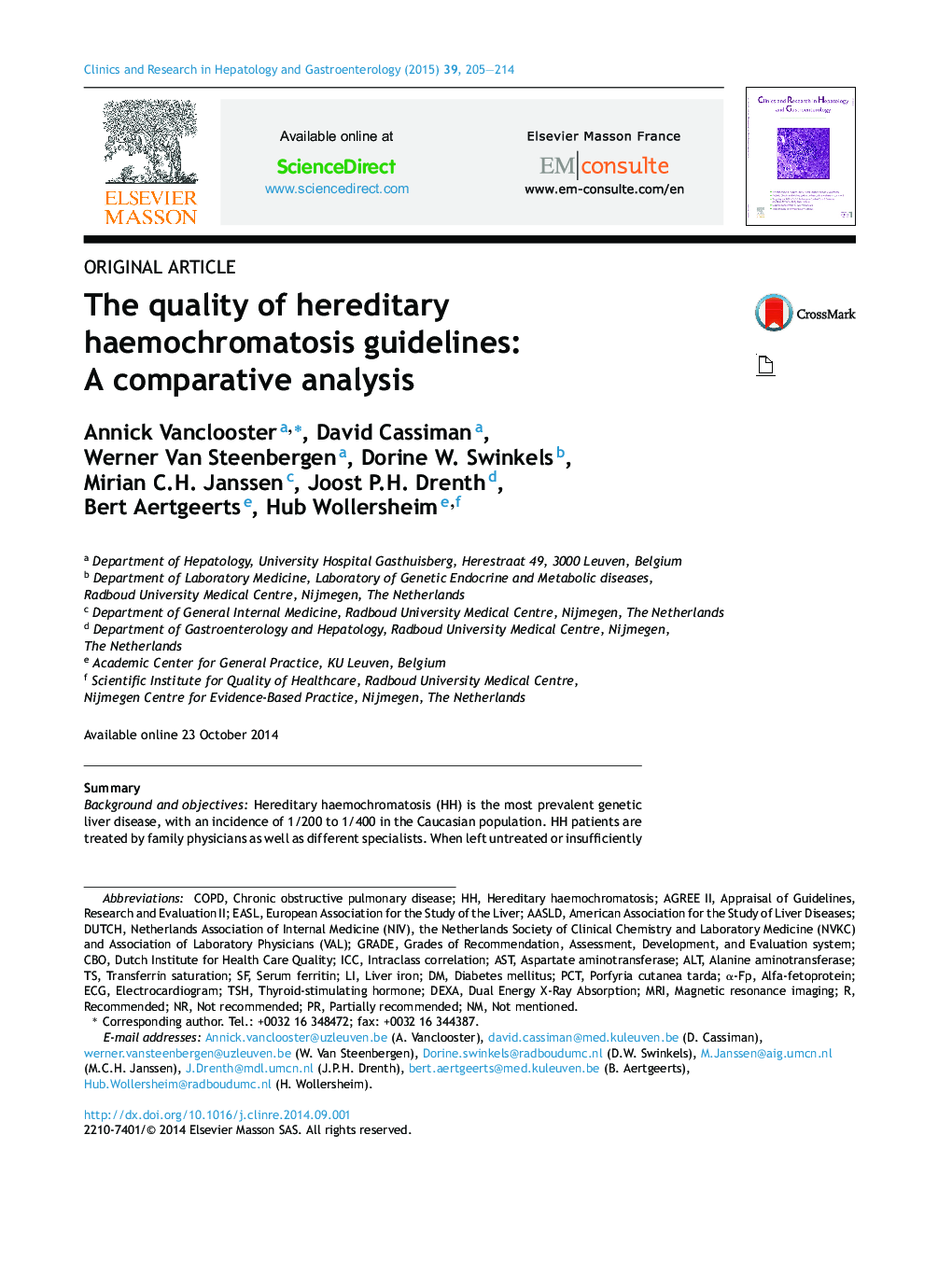| Article ID | Journal | Published Year | Pages | File Type |
|---|---|---|---|---|
| 3286170 | Clinics and Research in Hepatology and Gastroenterology | 2015 | 10 Pages |
SummaryBackground and objectivesHereditary haemochromatosis (HH) is the most prevalent genetic liver disease, with an incidence of 1/200 to 1/400 in the Caucasian population. HH patients are treated by family physicians as well as different specialists. When left untreated or insufficiently treated, the complications can become life threatening. To support and evaluate qualitative care for HH, we evaluated and compared the available structured guidelines on screening, diagnosis and management of HH patients.MethodsSeven appraisers systematically reviewed the retrieved guidelines. The Appraisal of Guidelines Research and Evaluation II (AGREE II) was used to score and discuss the quality and reach consensus. The content of recommendations and the evidence behind them, were evaluated.ResultsThree guidelines, developed by the American Association for the Study of Liver Diseases (AASLD), the European Association for the Study of the Liver (EASL) and a DUTCH guideline were found. Fifty-seven percent of the recommendations were not shared between the guidelines, pointing to inconsistency of their content. Only two references supporting the recommendations were shared between all three guidelines. The AASLD guideline contains no information about management and follow-up. Moreover, the methodological quality of the AASLD guideline was rated insufficient, except for ‘clarity and presentation’ (77%). Applicability of the guidelines was scored very low in all three (AASLD: 31%, EASL: 23%, DUTCH: 35%). The DUTCH guideline was judged best.ConclusionsVery poor consistency between available guidelines for HH hampers qualitative care and its evaluation. An updated high-quality and evidence-based guideline that covers follow-up and management of patients with HH is needed.
